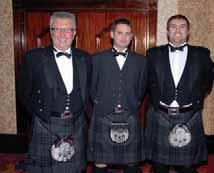
14 minute read
Press Releases

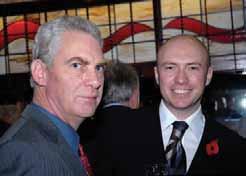
Advertisement




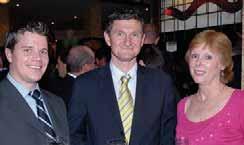





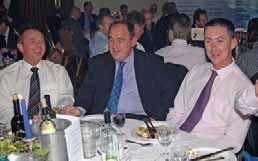
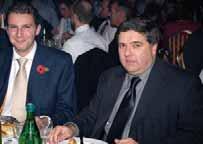








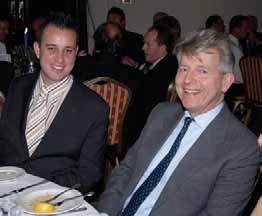



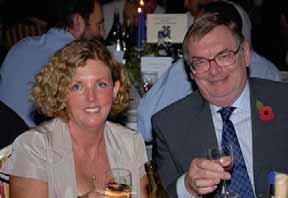








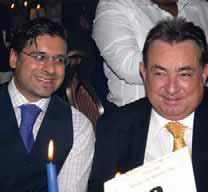




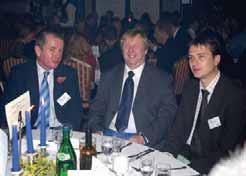
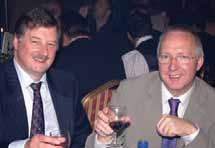



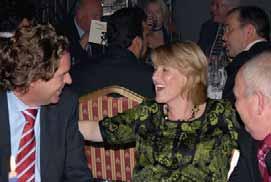
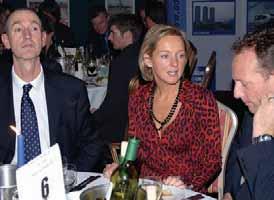
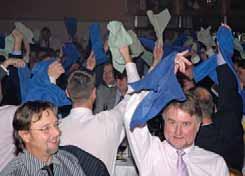
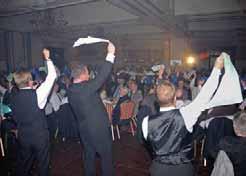


Henry Simpson from Adler and Allan accepting the Customer Care Award from Richard Chadderton from Total Kevin Porter from Broham accepting the HSE award from Nigel Clarke from Shell
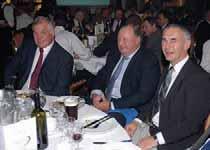
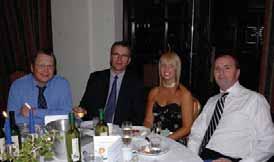

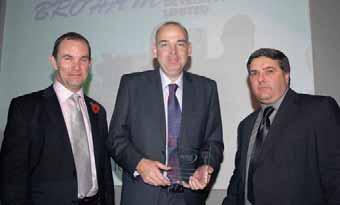

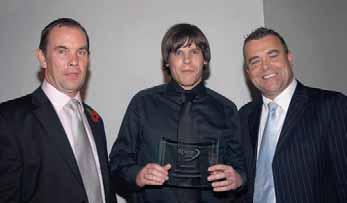
By Stefan Kunter, Fafnir GmbH
To date in the UK the hydrocarbon vapours expelled during refuelling vehicles at petrol stations are released into the atmosphere. It is the aim to reduce greatly these emissions for of a variety of reasons by the implementation of Stage II Vapour Recovery. To achieve this aim, the Department for Environment Food and Rural Affairs (DEFRA) has developed and recently published an implementation plan (1). In drawing up this plan DEFRAconsulted with equipment manufacturers, oil companies and petrol station operators and invited their input. The result of this information exchange has been documented in the "regulatory impact assessment" papers and "consultation" papers (2). The manufacturers of forecourt equipment have also developed and published a code of practice (3) in accordance with the European union of forecourt equipment producers C.E.C.O.D. (4). The time schedule and the technical details are given in DEFRA"Process Guidance Note" (5). Adecision was taken to prescribe vapour recovery stage II to be retrofitted by the 1st January 2010 if at least 3500-m3 fuel is sold per annum. For new stations with a total sale of fuel of more than 500 m3 per annum stage II equipment also has to be installed by that date.
In some European countries vapour recovery stage II was in operation for several years when it was discovered that many of the systems in use did not function properly (up to 40%).
Therefore vapour recovery monitoring was introduced to improve the situation. These monitoring systems have been in use since 2003 and the performance of vapour recovery systems has been seen to greatly improve the situation. Therefore DEFRA has introduced the implementation of vapour monitoring simultaneously with the introduction of Stage II vapour recovery systems. This demands that vapour recovery effectiveness has to be checked at least once a year by the authorities if no automatic monitoring system is installed. Additionally a weekly functionality check has to be carried out by the service station personnel and the results recorded in the service station log book/site diary.
If automatic vapour recovery monitoring is installed the effort and expense should be are greatly reduced as physical checking the vapour recovery system needs to be performed only once every three years (5).
Retrofit of vapour recovery systems and vapour recovery monitoring
Many modern dispensers are manufactured to include the necessary equipment for Stage II vapour recovery; some also include vapour recovery monitoring. There are also many pumps in existence for which retrofit kits for vapour recovery and monitoring are available. Details of some of these systems have already been described in previous issues of "The Bulletin" (6).
Although the retrofit process may appear to be straightforward there may be some issues, which need to be taken into consideration. We are all familiar with the old saying “if something can go wrong – it will go wrong”! With this adage in mind it is essential that thorough and careful preparation be given for the retrofit roll out. One of the key issues to address here is to ensure that third party installation companies, who will pay a major part in this implementation programme, receive the full support of equipment manufacturers in providing timely training for their engineers.
Another key issue that needs consideration is the combination of the vapour recovery system with a monitoring system. If the installation of the system is in any way incorrect or errors are made in the setting up process the system will go into an alarm condition, which is designed to detect and identify any errors.
An example of the installation is given in the following two illustrations. The first illustration shows an example of a revolution controlled vapour recovery pump together with a thermal flow sensor of the vapour recovery monitoring system.
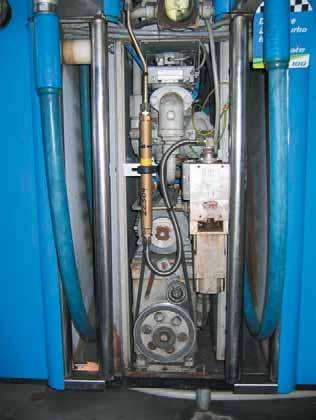
Gas Pump
Flow sensor
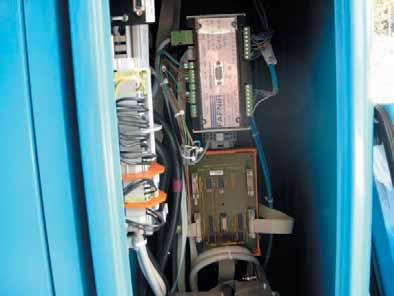
Figure 2: Control electronic of the monitoring system with complete wiring
The control electronic of the monitoring system is exhibited in the next figure 2.
In order to make error diagnosis more convenient some manufacturers of vapour recovery monitoring systems have equipped installation and service engineers with diagnostic tools. For example the electronic control unit
shown in figure 2 is equipped with two LED's each giving information about the state of the vapour recovery system of dispenser side Aand of dispenser side B.
More detailed analysis can be obtained by using the data stored in the electronic control unit of the monitoring system provided by some manufactures. Each refuelling operation lasting more than 20 seconds with a refuelling speed of more than 25 l/min is registered with all relevant parameters with up to 2000 refuelling transactions being stored. These data sets can be read out by an engineer with a laptop computor using a program
provided by the manufacturers. An example of this useful data is given in figure 3. which shows it depicted in graphical form.
In this diagram three different parameters are displayed in dependence of the valid refuelling operation counter. The most important parameter is the percentage value of the vapour recovery rate. Each valid refuelling operation is represented by a + in blue or red. The ideal value of a 100 % recovery rate is displayed as a black line and the tolerance limits of 85 % and 115 % are shown as red lines. The recovery rate between refuelling operation 604 and 804 is near the lower tolerance limit in the range of 90 %. It will be noted that the rate further decreases until it falls outside of the tolerance limit. After ten consecutive refuelling operations outside of the tolerance limit an alarm is generated, this is visible in the diagram by the change of colour to red. At refuelling operation 960 it will be seen that an engineer attempted to carry out a repair or adjustment to the vapour recovery system and gave a reset command to the monitoring system. It will be seen that the system was within the tolerance range for a few transactions, but because the fault was not properly rectified the recovery rate soon returned to below the tolerance limit and a new alarm was generated. The reason for the failure was that the vapour recovery pump was gradually failing in its performance. It will be seen that after replacing the pump and readjusting the vapour recovery system the recovery rate is returned to the ideal value of 100 %.
The red curve in the lower part of the diagram represents the temperature of the recovered vapour. In several vapour recovery systems the recovery rate is temperature dependent. This can be immediately be recognised because the day to night temperature variation causes a corresponding variation in the vapour recovery rate.
The magenta curve represents the
Figure 3: Graphical representation of about 600 refuelling operations of one dispensing point; details see text below


Figure 4: Graphical representation of about 600 refuelling operations of one dispensing point
fuel flow rate, in this case about 40 l/min. If there are blocked fuel filters the fuel flow rate decreases. This information can be used as an indicator to detect faulty filters or other problems. If the fuel flow rate is adjusted to a relatively fast 45 l/min some vapour pumps may not be able to generate a compatible suction force, which in turn will trigger an alarm.
One further interesting example is shown in the next figure 4.
The monitoring system is in the alarm state as is indicated by the red crosses representing the recovery rates for valid refuelling operations. Most deliveries show a recovery rate of only 5 %, which is obviously much to low, whereas some fuelling operations show a recovery rate of about 110 %. The refuelling point was a MPD with premium petrol, 98octane petrol (premium+) and diesel. Obviously for diesel transactions the vapour recovery system is not in operation and the pulses representing the fuel flow are ignored. For premium and 98 octane fuel the vapour recovery system is operational. It should be noted that there are many more transactions for premium petrol than for premium+. The explanation for the behaviour illustrated was a defective on/off valve in the premium petrol nozzle. The valve was opening insufficiently to allow the nozzle to function correctly whereas the 98-octane petrol nozzle was working within tolerance. After replacing the defective nozzle the vapour recovery system worked without problems.
There are many other errors that can be detected from the data and diagrams. Much experience in this respect is available in a diagnosis compendium (7).
Conclusion
The retrofit of vapour recovery systems is a necessary but not the only step to reduce hydrocarbon emissions during vehicle refuelling operations. The function of vapour recovery systems must be controlled because there are many possibilities of system failure to prevent recovery. It is believed an automatic monitoring system offers the best opportunity to ensure the systems is functioning, which provides the maintenance contractor with additional information to make the maintenance and repair of the system more efficient.
Bibliography
(1) Defra (Department for Environment, Food and Rural Affairs); Final implementation plan for – Petrol vapour recovery stage II controls (May 2006); see under: www.defra.gov.uk
(2) These papers are found on the
Defra’s homepage using the key words "vapour recovery"
(3) Forecourt Equipment Federation;
Code of Practice; Design,
Installation, Commissioning,
Operation and Maintenance of
Stage II Vapour Recovery Systems (July 2006)
(4) C.E.C.O.D. Committee of European
Manufacturers of Petroleum
Measuring and Distribution
Equipment: Proposal for test procedures for vapour recovery systems and vapour recovery monitoring devices in metering petrol pumps/dispensers and dispersed unit delivery systems on filling stations; Issue 10; January 2005.
(5) / Defra; Process Guidance Note 1/14 (06); Unloading of Petrol into
Storage at Petrol Stations (September 2006).
(6) S. Kunter, W. Pein, W.
Schrittenlacher; Vapour Recovery in
Europe; The Bulletin (March 2006) p. 51
By Steve Rowe, Surrey Trading Standards
LAPS were established in 1991 by the HSC & Local Authority Enforcement Liaison Committee, commonly known as HELAback in 1991.
The industry and regulators adopted these agreements around 1999 and there are currently 9 LAPS agreements in operation, of which London Fire & emergency Planning Authority have 5!!
The objectives of LAPS agreement is to promote consistency of Health & Safety enforcement of organisations with multiple outlets and improve H & S management systems within these organisations.
Surrey Trading Standards has had a LAPS agreement with Esso for over 4 years and our agreement has benefits for both parties.
Esso have benefited from continuity of personnel and avoidance of duplication when introducing new initiatives. (Petroleum Enforcement Liaison Circulars PETELS are issued by the Local Authority Unit are sent to all Petroleum Licensing Authorities to notify them of any new agreement)
As there are approximately 190 Petroleum Licensing Authorities this can save a considerable amount of time.
Our partnership has also allowed for guidance to be given on the requirements of the Dangerous Substances Explosives Atmosphere Regulations 2002 and in particular risk assessment and more recently the new petroleum licensing conditions.
LAPS partnerships allow PLAs to demonstrate that they can act strategically, improving the standards of health and safety management and or guidance with benefits to PLAs nationally. They will also receive recognition from HELAfor their contribution to local authority enforcement as a whole.
Agreements allow for a single point of contact and a liaison point for other PLA’s who require information on a new initiative/technology or who are considering taking some form of action against the company. This allows PLA’s to comply with the Health & Safety Commissions guidance section 18, or in the case of County Councils or Fire Brigades the spirit of the guidance.
Partnerships are entered into voluntarily but need senior management buy in to ensure the agreement is taken seriously and placed high in their priority lists.
The drafting of the agreement is a key stage and is especially important for the future success of the partnership. Poorly drafted agreements can mean a miss-alignment of expectation from the partners. In plain English what each party can and cannot do, or expect.
To avoid this possibility, the aims and objectives of both parties need to be clearly stated and boundaries set. For example Surrey TS could not represent Esso in court or write their H & S policies and procedures.
When you consider the following:
The Lords Prayer = 56 words
Ten Commandments = 297 words
The American Declaration of Independence = 300 words
Directive of the European & Economic Community import of caramel & caramel products = 26,911 words
It becomes clear how important it is to produce a concise succinct working document that can easily be reviewed annually, rather than a lengthy document that ends up on a shelf somewhere.









